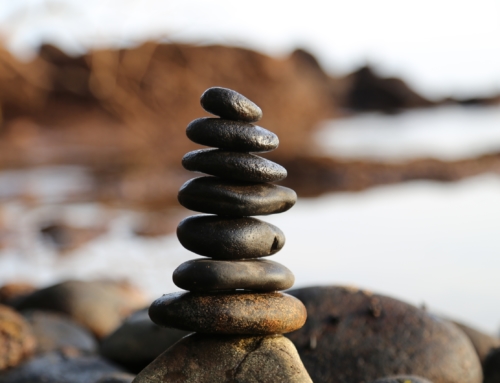Self-Soothing during Difficult Times
As anyone who has ever studied with me will tell you, I emphasize how to apply mindfulness in daily life. Recently I have been focusing on how to use mindfulness to self-soothe during times of difficulty. We’ve all experienced how unsettling and uncertain life can be and how easily we can be knocked off center at any moment. When we’re not in balance, we can become defined by whatever’s happening and get caught in what I call “reactive mind.” But through the skillful application of mindfulness we can learn to self-soothe whenever life delivers us a blow and soon regain our balance. When we lack the ability to self-soothe, we resort to using less skillful strategies to deal with difficulty such as escaping into fantasy, or overindulging in drugs, alcohol, or food, which usually prolongs our suffering.
Self-soothing begins with softening into your experience and then applying mindfulness to recognize that “this moment is like this.” From within the spaciousness that this softening creates, you can start to investigate the experience and gain access to insight. Specifically, there are three phases to the self-soothing process:
Phase I: Re-establish your Equilibrium
Calm yourself using whatever strategy works best for you. Examples of how you might do this include focusing on your breath or your feet touching earth. One person I know holds one hand with the other and imagines that the universe is embracing her; another calms herself by looking up at the sky. Next, name what’s going on and acknowledge that you’re upset. Can you identify the aspect of yourself that is upset? Allow the part of you that knows you’re upset to comfort the part that’s upset with compassion and loving-kindness.
Phase II: Remember your Intentions
Once you’ve returned to equilibrium, reconnect with your intentions. As you begin to remember your intentions, you become less and less defined by the difficult experience. You have more clarity of mind; although it may not be clear to you what to do, you remember what you’re about. I call this “self-remembering.”
Phase III: Redirect your Attention
Lastly, as your clarity returns and you re-engage with life from your intentions, begin to redirect your attention. What dharma insights can you apply to this difficult situation? For instance, you might reflect on the impersonal nature of life. Although you are having a personal experience, it is just causes and conditions that are creating this experience. This too is going to change because everything changes. Life is hard; therefore, it’s not a mistake that your life is hard in this moment. This insight alone can be a source of great comfort.






